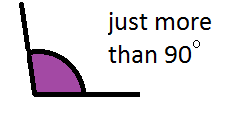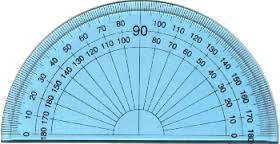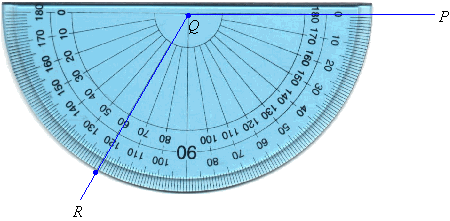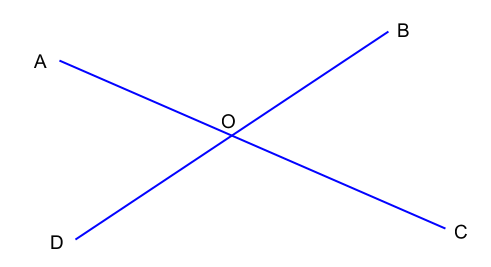Measuring, Estimating and Drawing Angles (Investigation)
Estimation
One skill we really need to develop is the ability to estimate angles. Like all estimation, getting good at it just takes practice, but we can use some simple benchmarks to narrow down the values.
Good benchmarks to use for angles are 90\deg and 180\deg.


So angles like these could be easily estimated to be around 90\deg and 180\deg.


Reasonable estimates for the above might be around 95\deg and 170\deg.
Also angles that are midway between these such as 45\deg (half of 90\deg) and 135\deg (halfway between 90\deg and 180\deg) can be useful benchmarks.
Estimating and Measuring
To measure angles we use a special instrument called a protractor. You can see one below.

Measuring an angle
Let's look at how to measure an angle using an example. I'm going to measure \angle PQR.

1. Place the line at the base of the protractor along one of the arms of the angle.
I have lined my protractor along PQ.
2. Line up the centre of the protractor with the vertex (point) of the angle.
The centre point of my protractor is touching at point Q.
3. Read the numbers to find the size of the angle in degrees. Remember to consider whether it's acute, obtuse or reflex to make sure you record the right value.
My angle is obtuse and, reading the protractor, I can see it's 120 \deg.
Activity
Here is a diagram showing angles meeting at a point. The two lines make four angles.

1. Complete the table by naming and estimating the size of each angle, then measuring the actual size.
We have started naming the angles for you.
| Angle Name | Estimate | Actual |
|---|---|---|
| \angle AOB | ||
| \angle BOC | ||
2. Add up all the angles you measured. What is special about angles that meet at a point?
Now it's your turn, this applet will let you practice measuring angles with a protractor.
Making angles
You may have just discovered using the applet above that it also lets you make angles. If you didn't play with that part before, do it now. If you need some pointers on how to make the angles read on...
- one arm of the angle has to be on the ZERO line of the protractor
- the other arm is then moved until the correct angle is reached
- make sure you are reading of the correct numbers (either outer or inner), depending on where the zero arm is
Let's practice drawing some using a protractor.
Acute Angles
Acute angles are between 0 \deg and 90 \deg.
Draw three different acute angles and label how big they are.
Right Angles
Right angles are exactly 90 \deg.
Draw a right angle in three different ways.
Obtuse Angles
Obtuse angles are bigger than 90 \deg but less than 180 \deg.
Draw three different obtuse angles and label how big they are.
Straight Angles
Straight angles are exactly 180 \deg.
Draw a straight angle in three different ways.
Reflex Angles
Reflex angles are bigger than 180 \deg but less than 360 \deg.
Draw three different reflex angles and label how big they are.
Revolution
A revolution is exactly 360 \deg- a complete circle.
Draw a revolution in three different ways.